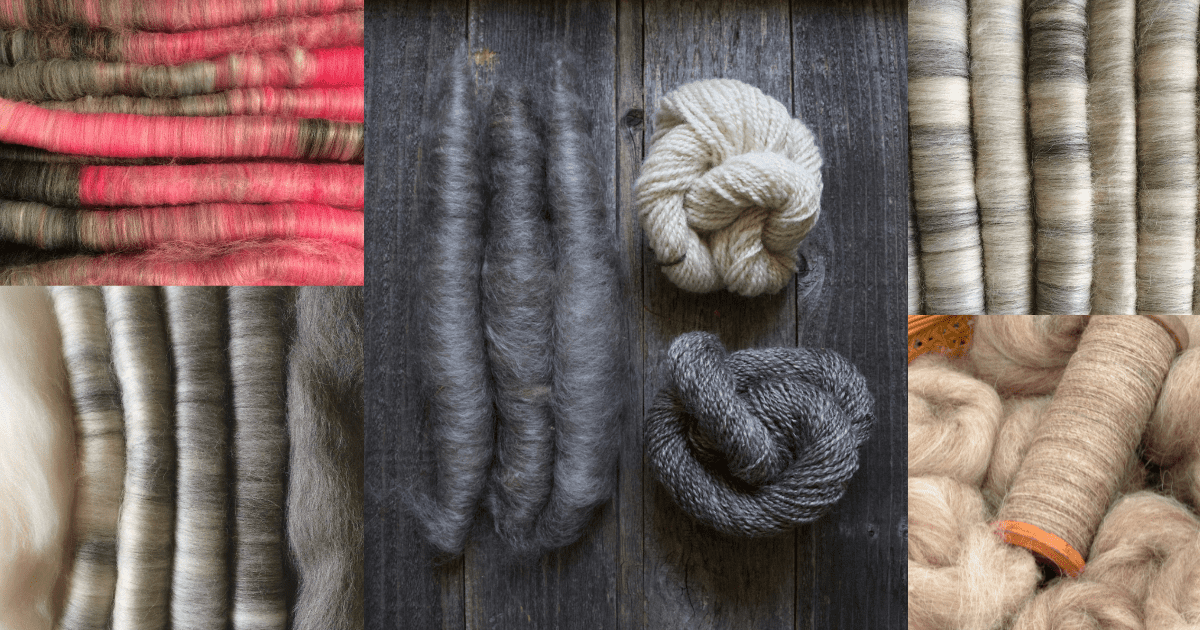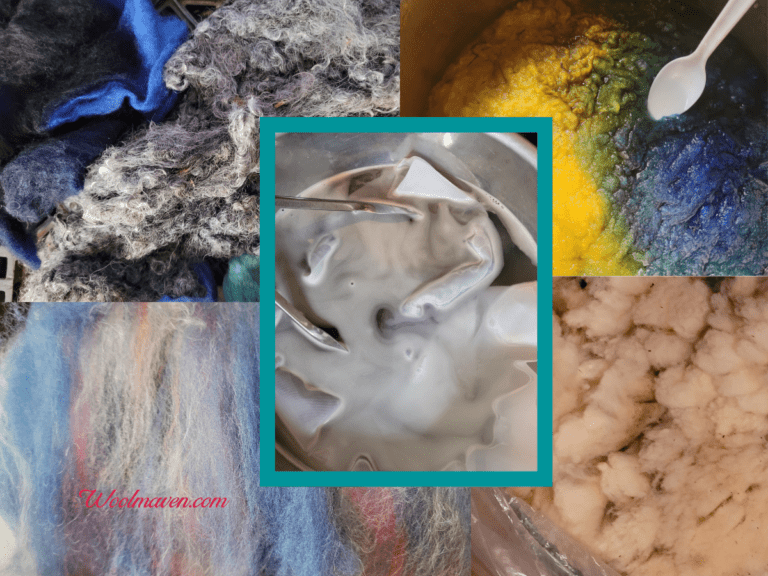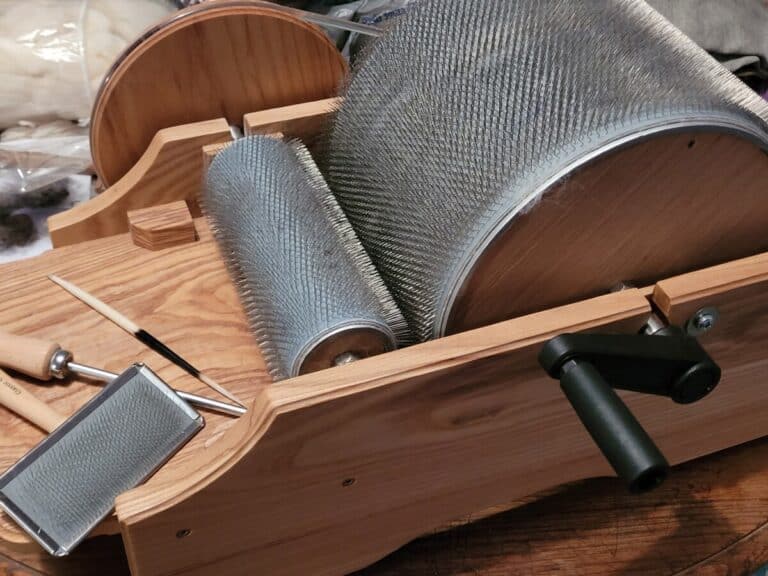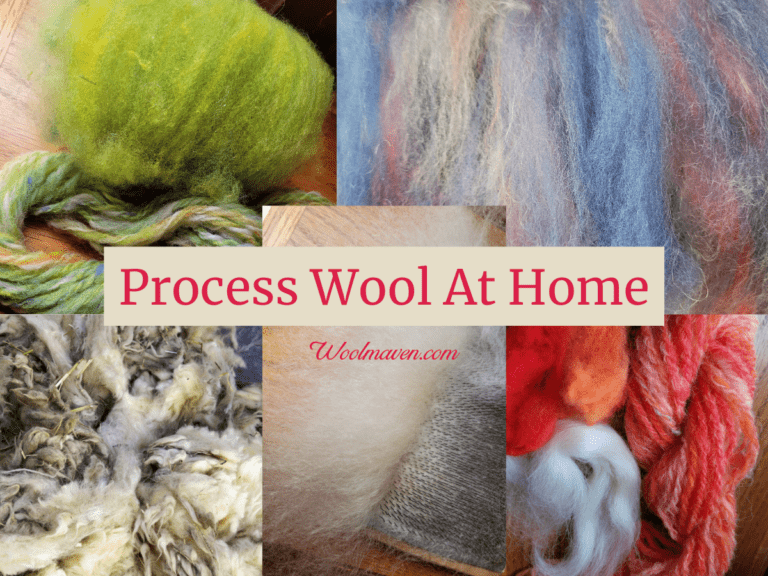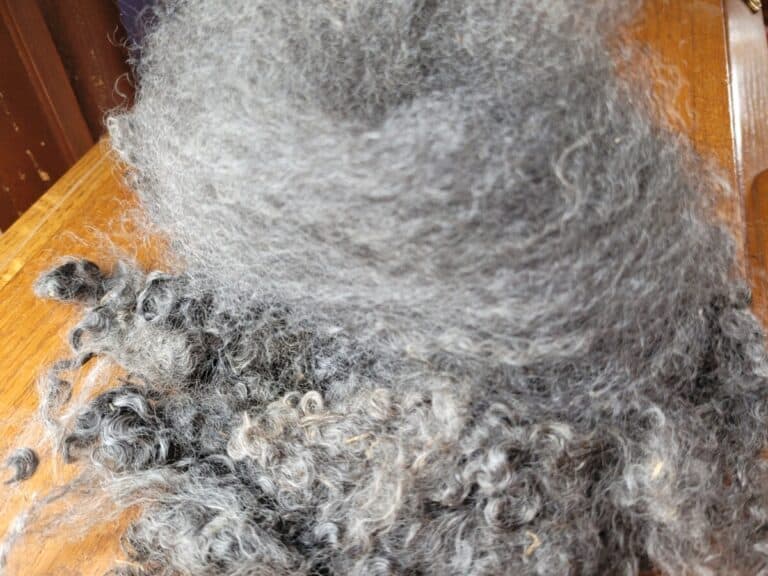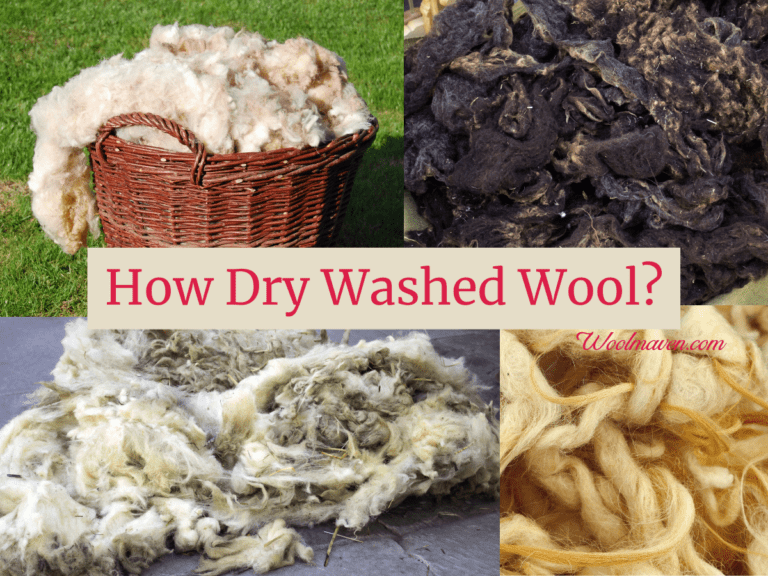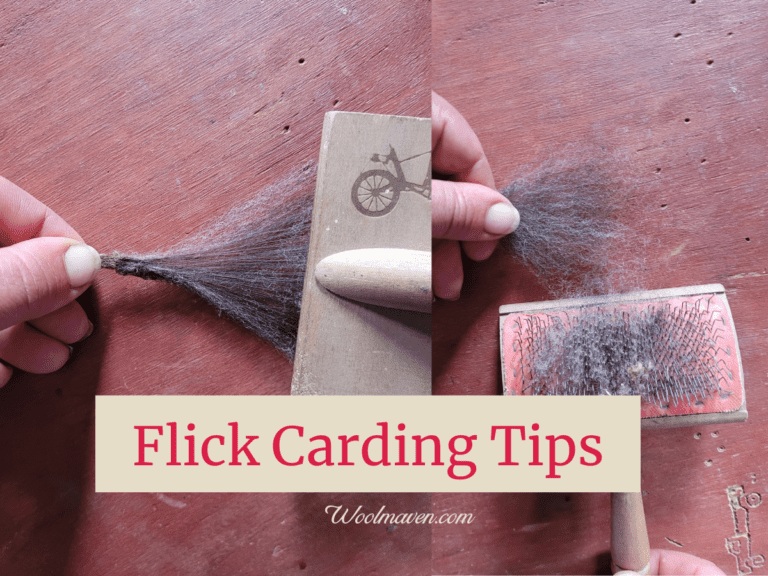Can You Dye Rolags?
Thinking about using rolags to make your next yarn? You could use undyed wool, for sure, but you probably have a few colors in mind for your project. So, when should you dye?
Can you dye rolags or do you need to dye the wool in another way?
Do not dye rolags. The dyeing process will flatten the rolag, which is the opposite of what you need when spinning with rolags. The entire purpose of a rolag is to be light and airy. Instead, dye the fiber before making the rolags or dye the yarn made with the rolags.
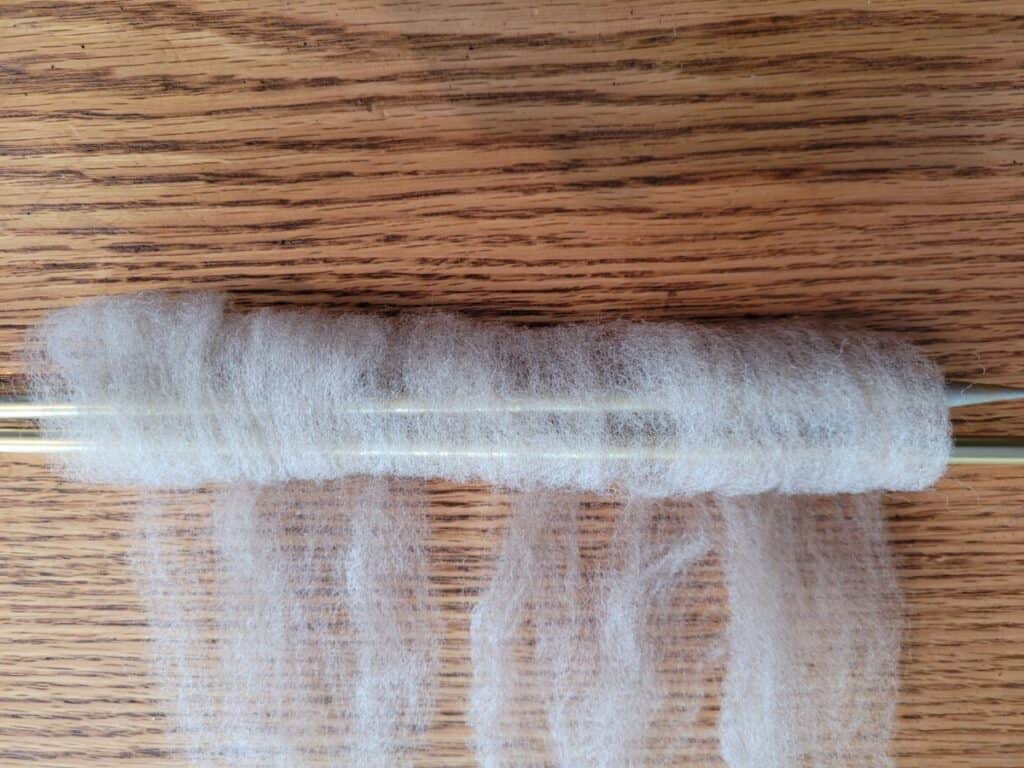
It doesn’t make sense to dye rolags
It really does not make sense to dye rolags as rolags. You could dye the wool before you card it into rolags or after you spin some yarn with the rolags.
Dyeing the rolags themselves is not a great idea. Why not? The purpose of making a rolag in the first place is to have a fluffy little carded tube of wool to use for your spinning.
In order to dye the wool, you have to add water, a good amount of water, which will flatten the tube. Even when it dries the rolag will not be as light and airy as it was before dyeing.
To get good results with your spinning, meaning you are keeping the airiness of the rolag, you’ll need to dye either before or after spinning, not dye in rolag form.
For more details on when you can wool, read When Should You Dye Wool? (fleece to finished project).
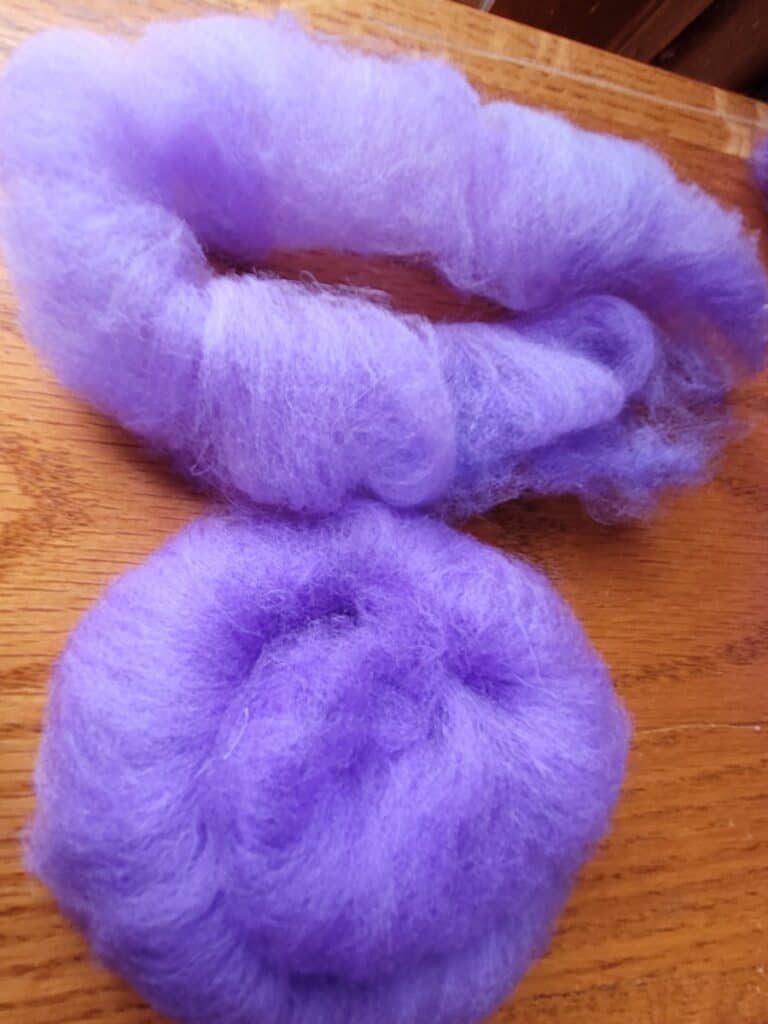
This post contains affiliate links, which means I receive commissions if you choose to purchase through links I provide (at no extra cost to you).
Dye wool before making rolags
You can dye the wool before you make rolags. This is the most likely way to get the lovely color results you want and still have a nice fluffy yarn, since you made it using an airy dyed wool rolag.
You have a few options here, you can dye the wool as fleece or you can dye the processed fiber, which would be the roving or top, depending upon how you prepped your fiber.
I should mention that, strictly speaking, you can only make a true rolag out of carded fiber, called roving, but not from top, which is combed, not carded.
Since most folks mix and match methods to suit the fiber and tools they have, we’ll include top, even though it is not technically correct, but is a common option for modern spinners.
Most folks would dye the fleece, or at least sections of fleece, then card the dyed fiber into small batts with handcarders, which would then be rolled up into rolags off of the hand cards.
Advantages of dyeing wool before making rolags
Dyeing the wool before making rolags have some distinct advantages.
Here are some of the advantages of dyeing wool before carding it into rolags:
- see your colors ahead of spinning
- make color blended rolags
- make gradient rolags
- vary rolags to make variable colorway yarns
Mainly, by dyeing the wool before putting it into rolags, you’ll be able to play with the colors and do a more gradual blending of the colors on the carders.
This will show up in your yarn as a more smooth color transition than a color change with dyeing, which will be either more patterned or more abrupt.
I love playing around with color and watching the way the colors blend and work together in the yarn, so, for me, dyeing then carding is the ticket!
A dye kit gives you a number of color choices and comes with instructions, it’s a simple and fun way to get started with dyeing protein fibers.
Easy Ways To Dye Wool For Handspinning will show you a few of your dyeing options!
Disadvantages of dying wool before making rolags
There are a few disadvantages of dying wool before making it into rolags, not many, but a few.
Here are some of the disadvantages of dyeing then making rolags:
- you will not have abrupt color changes in your yarn
- you can’t undye the wool if you don’t like the results (You can overdye it, but not undye it!)
I have to admit, especially if you are working with color, dying the wool before putting it into rolags has very few disadvantages, the ones listed here are not overly likely, just possible.
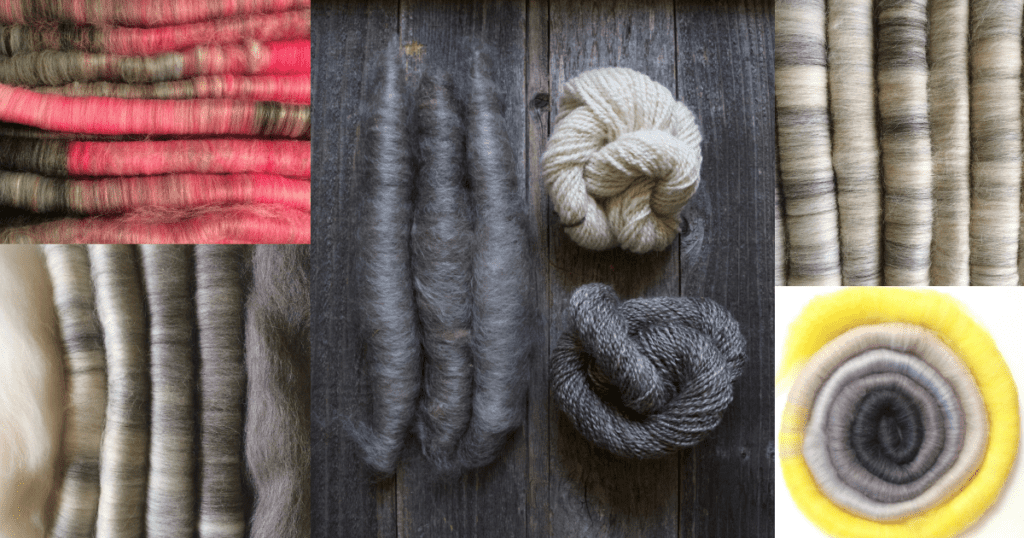
Dye yarn after spinning with rolags
The other option that makes sense regarding dyeing wool that is used for making rolags is to dye the yarn, so spin with the rolag made from undyed wool, then dye the finished yarn.
Advantages of dyeing as yarn
There are a few distinct advantages of spinning with rolags then dyeing the yarn:
- even coloration throughout the yarn
- easier to make patterns
- distinct color changes when combined with undyed or other dyed yarns
To me, the best thing about spinning with the undyed rolag, then dyeing the yarn is the evenness of color that you can get from dyed yarn versus dyed fiber.
Dyeing yarn is also the best way I have found to get patterns in your yarn. Sure I could count rolags as I spin, but I don’t or I lose track!
By dyeing the yarn, you have different ways to make the patterns that are easy to see, since you are making the pattern with the placement of the dye or the arrangement of the skein.
If you wait to dye until you have the yarn spun, then all of your dye goes straight to usable yarn, no dye or dye pot space is wasted with inferior bits that will be pulled out as your spin.
If you purchased raw wool, once you have done the initial washing and spinning, you have put more steps in between you and the grease, increasing the likelihood of a perfect dyed yarn.
I mention raw wool because I have a hard time getting all of the lanolin out of wool. I get to where I think it is clean, then spin it and notice not so clean water when setting.
If you are a light washer, like I apparently am, then another pass at cleaning up the lanolin before putting the dye to the yarn is a plus.
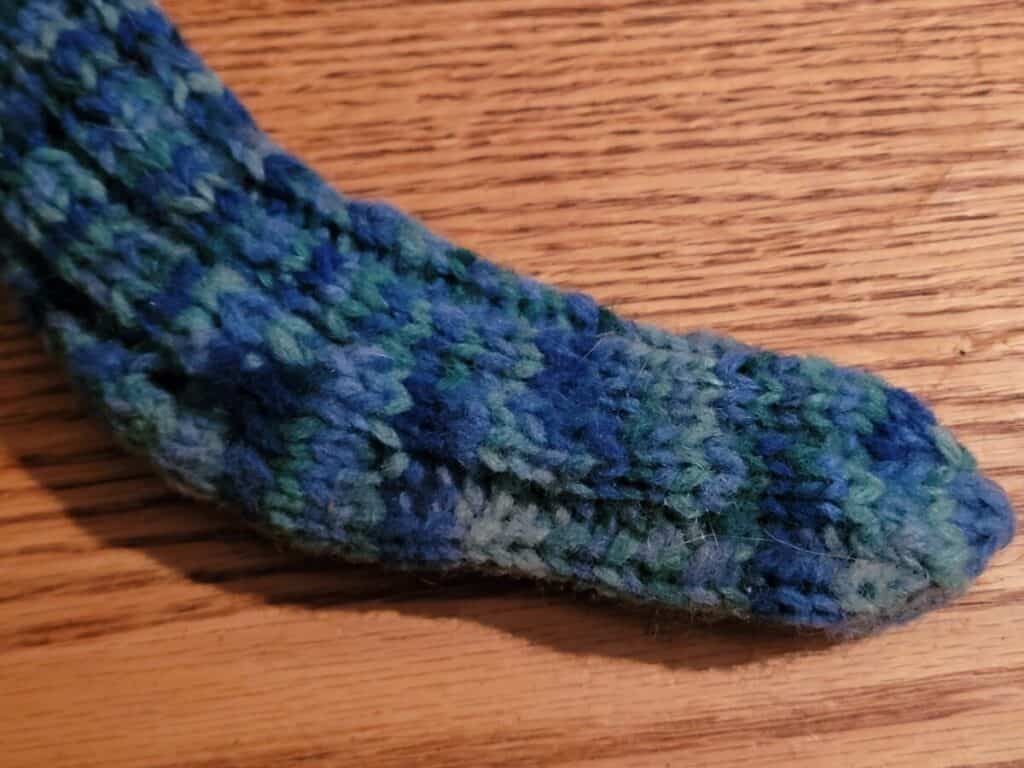
Disadvantages of dyeing as yarn
There are a few disadvantages of dyeing your wool as yarn:
- lack of complexity of color
- limited to no ability to blend colors
- potential abrupt color changes
When you dye your finished yarn, so spin with the undyed rolags then dye, you end up with a very even coloration throughout the yarn.
This may be what you want, but tend to I find that super even coloring a bit boring. It lacks complexity and gives an almost flat look to my finished work.
Anytime I can, I add multiple colors in one yarn, it’s just so much more pleasing to my eye.
I have also found blending opportunities to be very limited when working with dyed yarn, you have to blend from row to row rather than watch the colors blend in the yarn as you spin or knit.
The final potential disadvantage of dyeing the finished yarn versus dyeing before making the rolags is that you will have abrupt color changes in your yarn if you use multiple colors.
Maybe you are shooting for those abrupt color changes in your yarn or finished work? If so, then making the distinct color change in the dyebath is a super idea!
If you are hoping for a more gradual change, you’ll probably be more successful with dyeing first, rather than last.
The Joy Of Handspinning has a list of natural dyes and how to use them, if you are interested in plant based dyes and mordants as an option for dyeing your wool.

